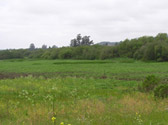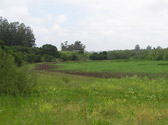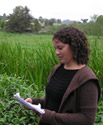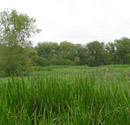Contact EPA Pacific Southwest Water Division
Pacific Southwest, Region 9
Serving: Arizona, California, Hawaii, Nevada, Pacific Islands, Tribal Nations
Watershed Priorities
Targeted Watershed Grants Program
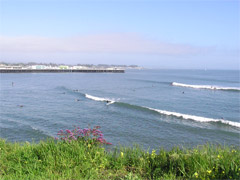

The Targeted Watershed Grants (TWG) Program, a national-wide grant program, is described at the Program national Web site. TWG grants awarded in U. S. EPA Region 9 are described at that website as well.
For more information regarding Region 9 TWG projects, contact Jared Vollmer (vollmer.jared@epa.gov).
West Coast Estuaries Initiative
The West Coast Estuaries Initiative for the California Coast (WCEI-CA) is a focused effort under the Targeted Watershed Grant Program to advance successful partnerships that conserve, restore and protect the water quality, habitat and environment of California coastal waters, estuaries, bays and near shore waters. Congress appropriated funds for this competitive grant program in 2007 ($2.5m) and 2008 ($5m) to be administered by U.S. EPA Region 9. Funds were not allocated to this Program in the FY 2009 Budget.
Program Highlights
- Between the 2007 and 2008 WCEI-CA Requests for Proposals, 33 applications were received requesting over $23 million indicating a high level of interest and need. The proposals address a wide range of priority coastal resource issues including: wetland restoration, habitat enhancement, green infrastructure and water quality improvement.
- Nine projects were chosen based on their ranking in the competitive selection process that emphasized environmental significance and results. All nine project sponsors match federal funds by contributing at least 25% of the total project amount. The nine selected projects also leverage an additional $11,000,000.
- The project list below and the attached map (PDF) (1 pg, 700K) show the geographic distribution of the projects from north to south along the California coast.
- A WCEI-CA summary and list of projects are included in the EPA Progress Report 2009: Pacific Southwest Region 9.
West Coast Estuaries Initiative funds are also awarded by EPA's Region 10.
2007 CA West Coast Estuaries Initiative Projects
Applications responding to the 2007 Request for Proposals were received by November 19, 2007. The following list provides a summary of each selected project. A map (PDF) (1 pg, 700K) showing the location of each project.
| Green Infill - Clean Stormwater (map) (Association of Bay Area Governments/SFEP) | |
|---|---|
| Location: | San Francisco Bay |
| Budget: | $3,476,995 (Grant Request $996,495 + Match $2,480,500) |
| Leveraged $s: | Approximately $2 million over required 25% match |
| Period: | Three years, Oct 2008 to April 2011 |
| Issues: | Polluted urban stormwater, wetland loss |
| Project: | Demonstration of benefits of Low Impact Development (LID) to local decision makers, restoration of Chelsea Wetlands/Pinole Creek, outreach and education, effectiveness monitoring of San Mateo Green Streets and Parking Lots Project, local government mini-grant program for adoption of LID programs |
| Outcomes: | Reduced runoff volume, pathogen and suspended sediment load reduction, 1 acres restored tidal marsh, 2,100 linear feet restored marsh plain, increase of 12 acre feet of flood attenuation capacity, 375-430 ft. restored riparian buffers, local government adoption of zoning and building codes reflecting LID and green stormwater principles |
| Contact: | Jennifer Krebs, jkrebs@waterboards.ca.gov |
| Website: | Green Infill - Clean Stormwater Project |
| EPA contact: | Luisa Valiela, valiela.luisa@epa.gov |
| Lower Carmel River Floodplain Restoration Project (map) (Big Sur Land Trust) | |
| Location: | Carmel Bay/Monterey County |
| Budget: | $2,992,000 (Grant Request $992,000 + Match $2,000,000) |
| Leveraged $s: | Approximately $500,000 |
| Period: | Three years, October 2008 to October 2011 |
| Issues: | Water quality, water supply, flooding |
| Project: | Wetland restoration, levee removal, floodplain re-vegetation, road improvements, water quality monitoring |
| Outcomes: | Increased river flows and groundwater re-charge, 90 acres restored floodplain (riparian and wetland habitat), 36 acres organic agricultural preserve graded as floodplain, removal of 800,000 yr3 of soil and debris from floodplain, conservation easement on restored floodplain |
| Contact: | Donna Meyers, dmeyers@bigsurlandtrust.org |
| Website: | Big Sur Land Trust |
| EPA contact: | Suzanne Marr, marr.suzanne@epa.gov |
| Mattole River Estuary Conservation Initiative (map) (Mattole Salmon Group) | |
| Location: | Humboldt and Mendocino Counties |
| Budget: | $1,283,981 (Grant Request $958,435 + Match $324,550) |
| Leveraged $s: | Approximately $1million |
| Period: | Five years, January 2009 to January 2014 |
| Issues: | Salmon, sediment and temperature impairments (largely from forestry impacts) |
| Project: | Estuary in-stream habitat enhancement; stream bank restoration; road decommissioning; road and crossing upgrades; instream stabilization; riparian habitat and canopy enhancement; monitoring of water quality, salmon population and climate change; invasive vegetation removal; education; restoration planning |
| Outcomes: | 30% increase in estuary salmonid habitat through deep pool creation, large wood/boulder structure placement and bank stabilization; 73,395 yards3 sediment load reduction, restoration of native vegetation assemblages; 24 acre fuel break, increased shade from 4,000 cottonwoods planted, restoration planning; improved data management and outreach. |
| Contact: | Kate Cenci, kate@mattolesalmon.org |
| Website: | Matteole Salmon Group |
| EPA contact: | Janet Parrish, parrish.janet@epa.gov |
| Restoration of Off-Estuary Wetland and Stream Habitats of Waukell Creek, Klamath River (map) (Yurok Tribal Fisheries Program) |
|
| Location: | Tributary to the Lower Klamath River, North Coast |
| Budget: | $547,832 (Grant Request $493,000 + Match $54,829) |
| Leveraged $s: | Approximately $400,000 |
| Period: | Three years, October 2008 to October 2011 |
| Issues: | Salmon, off-estuary habitat loss |
| Project: | Habitat restoration, baseline fish population monitoring, channel and floodplain restoration, road stream crossing improvements, cottonwood shade tree planting |
| Outcomes: | Increased hydrologic connectivity and improved fish passage, increased salmon habitat, increased flood and sediment retention capacity, improved wetland function and water quality |
| Contact: | Sarah Beesley, sbeesley@yuroktribe.nsn.us |
| Website: | Yurok Tribal Fisheries |
| EPA contact: | Loretta Vanegas, vanegas.loretta@epa.gov |
2008 CA West Coast Estuaries Initiative Projects
Applications responding to the 2008 Request for Proposals were received by August 25, 2008. The following list provides a summary of each selected project. A map (PDF) (1 pg, 700K) showing the location of each project.
| Tijuana River Watershed (map): Water Quality Improvement and Community Outreach Project (Southwest Wetlands Interpretive Association) | |
|---|---|
| Location: | U.S.-Mexico Border/South San Diego County |
| Budget: | $1,799,297 (Federal share - $990,898, Match - $808,399) |
| Leveraged $s: | Approximately $700,000 |
| Period: | Three years, June 2009 to June 2012 |
| Issues: | Wetland of international significance, 303d listings, urban, agricultural and industrial discharges, rapid population growth and urbanization, water supply, flooding, polluted runoff |
| Project: | Facilitate/coordinate watershed improvement projects to reduce sediment, trash, and polluted runoff entering watershed from Mexico; improve quality of wetland habitat while expanding ability of regional agencies to manage trash and sediment; increase active community participation in protecting and enhancing the reserve |
| Outcomes: | Reduction in wetland degradation from contaminated trans-boundary flows from Mexico; improvement of water quality, wetland habitat, and upland habitat; enhance public perception of coastal wetlands and increased participation in restoration efforts |
| Contact: | Debra Carey, swiadcarey@sbcglobal.net |
| Website: | SWIA Restoration Projects |
| EPA contact: | Doug Liden, liden.douglas@epa.gov |
| Moro Cojo Slough Restoration and Management Plan Implementation (map) (Moss Landing Marine Labs, San Jose State University) | |
| Location: | Monterey Bay/Monterey County |
| Budget: | $360,847 (Federal share - $267,347, Match - $93,500) |
| Leveraged $s: | Approximately $500,000 in Moro Cojo Slough |
| Period: | Three years, May 2009 to May 2012 |
| Issues: | 303d-listed for pesticides/sediment, TMDLs, agricultural runoff, Salinas Valley Ag. Waiver program, IRWMP plan, infiltration/GW recharge, landowner partnerships |
| Project: | Wetland restoration, wet corridor construction, upland vegetation restoration, public access and education, coordination with agricultural |
| Outcomes: | Restore 30 acres of wetland and upland habitat through removal of non-native plants, enhance 45 acres of wetland and upland habitat through increasing ponding of water, fence off 6 acres of wetland and upland habitat allowing native plan restoration, design restoration for 370 acres of historical floodplain |
| Contact: | Kevin O'Connor, koconnor@mlml.calstate.edu |
| Websites: | Moss Landing Marine Laboratories, Central Coast Wetlands Group |
| EPA contact: | Suzanne Marr, marr.suzanne@epa.gov |
| Transforming Inflows to the Elkhorn Estuary (map): Lower Carneros Creek Wetland Restoration (Agriculture and Land-Based Training Association) | |
| Location: | Monterey Bay/Monterey County |
| Budget: | $1,459,962 (Federal share - $999,962, Match - $460,000) |
| Leveraged $s: | Approximately $400,000 |
| Period: | Four years, July 2009 to July 2013 |
| Issues: | 303d-listed for pesticides/sediment/pathogens, agricultural runoff, erosion, freshwater and inter-tidal wetlands, pre-TMDL implementation |
| Project: | Wetland restoration on 55 acres of floodplain, non-native vegetation removal, reintroduction of native vegetation (17 acres), water quality monitoring to determine project effectiveness, adaptive management, educate/train land-use planners, land managers, farmers, public |
| Outcomes: | Target reductions of 50% of nutrients/65% of suspended solids and turbidity/75% of pesticides, engage 200 regulators/planners, train 15 restoration practitioners, train 64 volunteer monitors, educate 300 community members |
| Contact: | Brett Melone, brett@albafarmers.org |
| Website: | A.L.B.A.: Conservation & Farm Innovation |
| EPA contact: | Sam Ziegler (ziegler.sam@epa.gov) |
| San Gregorio Creek Watershed: Filling Critical Flow Needs (map) (American Rivers) | |
| Location: | Coastal San Mateo County |
| Budget: | $589,646 (Federal share - $441,146, Match - $148,500) |
| Leveraged $s: | No additional leveraged funds identified |
| Period: | Two years, February 2009 to June 2011 |
| Issues: | Instream flow and water quality/habitat, agricultural water use, sensitive and endangered species, transfer of water rights, 303d-listed |
| Project: | Transfer of water rights for instream use, stakeholder/technical/legal analyses, water quality/hydrologic/lagoon dynamics monitoring, unimpaired flow study/habitat mapping, outreach/information transfer |
| Outcomes: | Acre-feet of water transferred to instream flow annually (target: 70 acre-feet), Coho and Steelhead habitat identified and characterized, legal strategy to be transferred to other watersheds, increased understanding of hydrologic/biological/physical riparian conditions/dynamics |
| Contact: | Elizabeth Soderstrom, esoderstrom@amrivers.org |
| Website: | American Rivers: Agricultural Efficiency in the San Gregorio Watershed |
| EPA contact: | Luisa Valiela, valiela.luisa@epa.gov |
| South San Diego Bay Coastal Wetland Restoration and Enhancement (map) (San Diego Unified Port District) |
|
| Location: | South San Diego County/Port of San Diego |
| Budget: | $2,229,043 (Federal share - $1,000,000, Match - $1,229,043) |
| Leveraged $s: | Approximately $1 million over required 25% match |
| Period: | Four years, June 2009 to June 2013 |
| Issues: | Invasive vegetation, urbanized watershed, trash laden runoff, non-functioning wetlands |
| Project: | Wetland restoration, non-native vegetation removal, debris removal, increase tidal marsh water circulation, volunteer labor, outreach/education |
| Outcomes: | Restore and enhance 160 acres of wetland and upland habitat through removal of four acres of invasive species/25 tons of debris, planting of 15,000 native plants, excavating 48,650 cubic yards of material to increase tidal marsh water circulation, and utilizing 1500 volunteer hours |
| Contact: | Eileen Maher, emaher@portofsandiego.org |
| Website: | Unified Port of San Diego: Environment |
| EPA contact: | Cindy Lin, lin.cindy@epa.gov |
2009 CA West Coast Estuaries Initiative
Funds were not allocated to the West Coast Estuaries Initiative Program in the FY 2009 Budget. Project funds are available, however, for the San Francisco Bay Water Quality Improvement Fund - the request for proposals applications were due September 23, 2009.
Contact Information
Sam Ziegler (ziegler.sam@epa.gov)
Phone: 415-972-3399


